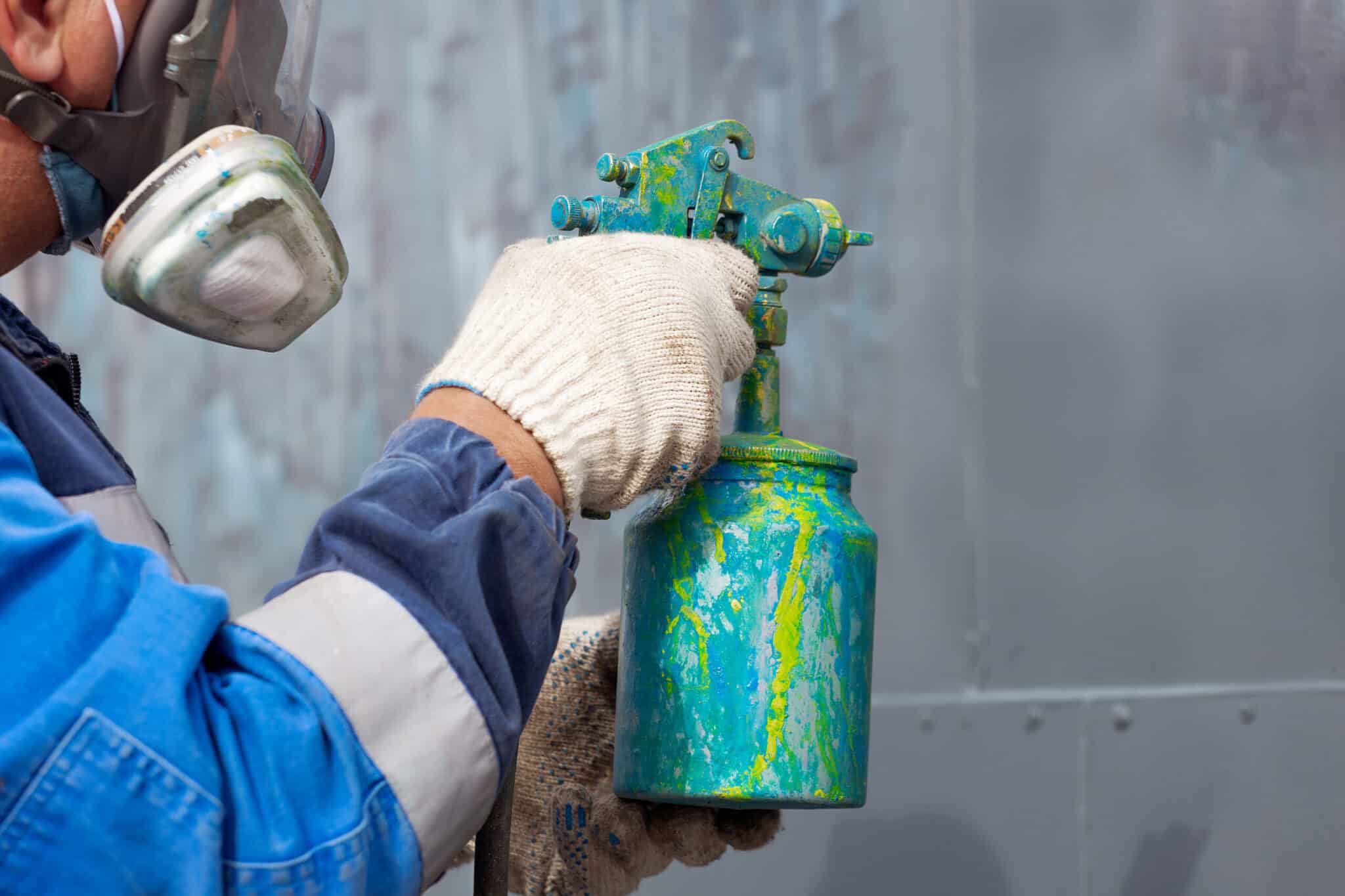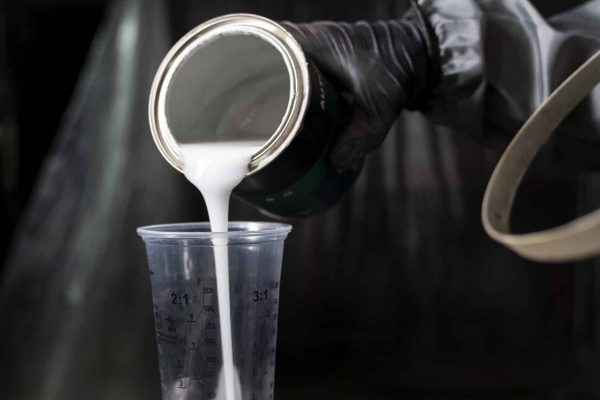Industrial Contract Manufacturing Group (ICMG) is committed to being the best powder coating service provider for Philadelphia businesses. Our team has years of experience in the industry, and we use state-of-the-art equipment and specialists in the process for coating metal parts of all kinds.


This industrial process is reserved for professional, commercial and industrial uses because of its complexity and the expertise and equipment required. Electrostatic paint can be applied to large formats of metal parts, as well as large quantities, and iswidely used in a variety of industries, including automotive, architecture/building, and appliances. It is used among others in the following contexts:
Powder coating has gained popularity in the automotive industry because of its speedy production times, low operating costs, and low impact on the environment. It is applied to wheels, grilles, bumpers, door handles, roof racks, interior and exterior trim, and car, van, and pickup truck bodies as a clear coat and as a primer.
Powder coating is a finishing technique that may be used on both indoor and outdoor metal objects. It may be customized with various colors and textures to improve the overall look and is long-lasting. Powder coating finishes are used on aluminum extrusions that are used in the frames of windows, doors, and modular furniture in the architecture and building market. It is also used on light poles, railings, signs, posts, and fencing in highway and building projects.
With years of powder coating experience, professional powder coating services can complete projects of any scale, from modest decorative objects to huge architectural structures like steel beams, gates, signs, facades, and staircases.
Powder coating companies help protect agricultural equipment during the manufacturing process. This powder coat finish protects combines and other agricultural equipment from damages.
Lighting fixtures, antennas, electrical components, farm equipment, golf clubs and carts, ski poles and bindings, snowmobiles, bicycles, exercise equipment, display racks, shelves, store fixtures, vending machines, metal furniture, computer cabinets, desk accessories, baby strollers, cribs, metal toys, wagons, lawn mowers, snow blowers, barbecue grills, patio furniture, garden tools, bathroom scales, tool boxes, and fire extinguishers are all examples of everyday products that can benefit from powder It is anticipated that the use of powder coating will continue to grow in the future.
Liquid metal paint is used for all types of parts that include elements involving welding and mechanical applications. It can also be used when several coats are applied to prevent metal corrosion. It offers high precision, requires limited pre-treatment of the surface and quality finish.


An interesting compromise for good resistance to UV and corrosion and harsh climatic conditions.
The main properties of this type of powder coating are its resistance and flexibility. Its high resistance to ultraviolet rays reduces the risk of discoloration due to sunlight and its durability in the face of various climatic conditions makes it suitable for outdoor use on fences, outdoor furniture and agricultural equipment, among others. It is an excellent choice for indoors and outdoors.

Powder coating offers many advantages over traditional liquid paint. It is more durable, cost-effective, and environmentally friendly than liquid paint. The electrostatic process ensures that the powder adheres to the surface evenly and completely, resulting in a smooth finish with no drips or runs. Additionally, powder coating does not require a primer coat or a topcoat, which saves time and money. Here are the main advantages of choosing powder coating services:
As it does not involve the use of any solvent, it is an environmentally friendly process in comparison to other coating application methods. Its LEED approval makes it a method of choice for use in architecture and building design. The powder coating is also ROHS compliant, limiting its impact on public health and the environment, and is VOC-free.
Additionally, since the majority of powder coating overspray that does not stick to the item can be recovered and reused, the waste often created by liquid finishing procedures is all but eliminated. Although not always feasible for low-volume production, this illustrates how environmentally friendly powder coating is.
Single-coat and requiring no drying time, electrostatic paint coating is a fast method that makes it possible to produce large quantities and meet tight deadlines, especially in large-scale industrial and commercial mandates.
Powder coating is a coating method that offers a wide choice of finishes, textures and thousands of colors. It therefore ensures great control over the aesthetics and design of the finished products, ensuring customer satisfaction, an efficient powder coating process and long-lasting finish on all products or equipment.
Most industrial environments are harsh and require equipment and structures to be efficiently protected for as long as possible. Powder coating is a perfect candidate for your industrial needs, both by its quality and durability. A coat of powdered paint will last longer than other options, withstanding the test of time and protecting your physical assets for many years before needing to be replaced thanks to powder coating’s exceptional durability.
Powder coated products are known for its resistance to weather, corrosion, chemicals, and up to 20 years of protection for a wide range of products, whether steel or others, when applied by trained professionals.
This is the most important step since it is a crucial factor determining the uniformity and durability of the coating following its application. The preparation of the room can be done in many ways:
The chosen mechanical operation will expose the metal to make it suitable for the powder paint coating. Another option available is chemical preparation of metal surfaces. To ensure the quality of the final result, a pre-treatment by chemical soaking is then carried out in 5 phases with zinc phosphate.
ISO 9001-2008;
Canada – Controlled Goods Program;
UL;
AAMA-2605;
By requesting the paint application subcontracting services of the Industrial Contract Manufacturing Group, you are opting for a complete process. You also select an integrated approach where your interests are put first, and one of these is the profitability of your project.
Supporting manufacturing companies on a daily basis in their activities, the Industrial Contract Manufacturing Group offers its customers a global solution in industrial or manufacturing subcontracting. Recognized for our expertise in multiple fields, we are your single point of contact for all your needs in terms of processing manufacturing materials (rubber, wood, metal or plastic), surface treatment,
Also called powder coating, it is a painting process used for coating metal parts of all kinds. It is a thermosetting paint (therefore which solidifies thanks to heat) which is also called baked paint.
Its application is done most often with a spray gun and consists of a thin coat of powder paint – in various colors, finishes and textures – followed by baking in a specialized oven at 400 degrees Fahrenheit. The result obtained is a coating of unfailing durability and resistance.
Powder coating is a process of applying a protective and decorative layer to metal surfaces. It involves the use of finely ground powder particles, which are electrostatically charged and sprayed onto a surface using a spray gun. This process creates a unique finish that can be used on a wide array of surfaces.
The powder coated finishing is resistant to corrosion, abrasion, and UV rays due to the fusion bonded epoxy that is applied with the powder particles. The curing agent locks in the particles, creating an even and durable finish. In some cases, abrasive blasting may be used to prepare the surface for powder coating for added protection.
Powder coating provides an attractive and reliable finish to many different surfaces and materials. Its corrosion-resistant qualities make it ideal for outdoor furniture, fencing, tools and other items that will be exposed to the elements. With its wide range of color options and finishes available, it’s easy to find something that suits your aesthetic needs.
This method of coating is becoming increasingly popular as it provides great results at an affordable cost. Whether you’re looking for long-term protection or simply want something that looks good, powder coating is an excellent choice for many applications.
Powder coating is generally more expensive than regular liquid painting due to the need for professional equipment and skilled labor. Beyond the actual painting process, businesses must also factor in the cost of sandblasting or ballblasting, a necessary step to prepare metal surfaces for the application of powder paint.
The quality and durability of powder paint is directly dependent on the skills and training of the team treating the metal surface and the specialized equipment used. This is why many manufacturers and industrial equipment owners choose industrial subcontracting for their powder coating services, relying on the expertise of ICMG to protect their products and equipment.
A powder coat is a wonderful choice if you want to give your metal product a long-lasting protective surface. However, wet painting is a great option if you need to paint your metal thing on a budget. The particular application and components involved, as well as other criteria, will ultimately determine the ideal finishing technique for you.
Always seek the assistance of a specialist who can offer knowledgeable direction and explain all the possibilities depending on your needs, your product’s demands, and the needs of your customers.
When it comes to preparing a surface for powder coating, the powder coating industry has come a long way. Specialized coating services use state-of-the-art technology and the latest techniques to make sure that even the most complex surfaces are prepared properly for a smooth finish. Powder coating companies typically have a few basic steps they follow when prepping a surface for powder coating.
The first step is usually shot blasting – also known as sandblasting – which is used by many automotive, aerospace, and industrial companies like Harley Davidson. This process removes old coatings and other contaminants from the substrate being coated. The next step is chemical cleaning, in which organic compounds are applied to the surface to remove any remaining contaminants before applying the powder coat.
After these two steps are completed, it’s time to start applying the powder coat itself. This process is often compared to liquid paints since it involves spraying an electrostatically charged powder onto an object until it’s completely covered. However, unlike liquid paint, it’s important not to over apply the powder or else you could end up with an uneven finish. With proper preparation and care, however, you can achieve beautiful and long-lasting results with your powder coating project!
The powder coating process is a specialized finishing technique that involves applying epoxy resins and polyvinyl chloride to a surface. This creates a protective layer that can withstand environmental damage, corrosion, and ultraviolet light. Before the powder coating process can begin, the surface must be properly prepared by media blasting or chemical cleaning. Once the surface is ready, it’s time to apply the powder coat. The most common methods are electrostatic spray deposition and fluidized bed application.
At this stage, customer service comes into play. Companies offering powder coating services need to ensure they provide high-quality work with quick turnaround times. They also need to guarantee their finished product meets all industry standards and regulations, especially if they’re operating in North America.
To ensure this level of quality assurance, many companies have implemented rigorous testing processes for each step of the powder coating process. This ensures customers get the best possible results and a durable finish that will last for years to come.
Maintaining powder coated surfaces is an important part of making sure it keeps its appearance and durability. Proper care of the surface will help to keep its protective layer intact, while also preventing damage from occurring in the future. Let’s take a look at some tips for maintaining powder coated surfaces.
First of all, it’s important to make sure that powder coated surfaces are cleaned regularly. This can be done either with a standard cleaning solution or a degreaser, depending on the type of dirt or grime that needs to be removed. It’s also important to avoid using any abrasive materials when cleaning since this could cause damage to the coating. Additionally, be sure to rinse off any residue with clean water after using any cleaning agents.
Lastly, regular inspections should be done on the surface for signs of wear and tear. If any cracks or chips are found then they should be repaired promptly as this could lead to further damage down the line. Also, if there is any rust present then it should be treated immediately so that it doesn’t spread across other parts of the coating. Taking these steps will help ensure that your powder coated surfaces stay in good condition over time.
Proper maintenance is key when it comes to keeping your powder coated surfaces looking their best and staying protected from adverse conditions. By following these tips and regularly inspecting your surfaces you can ensure that your powder coating will remain in great shape for many years to come!
When it comes to powder coating, quality control is of the utmost importance. The process of powder coating requires a very specific set of conditions to be met in order for the finished product to be as strong and reliable as possible. That’s why powder coaters must use strict quality control measures throughout the entire process.
Throughout the powder coating process, several steps are taken to ensure that each part meets all standards of excellence set by the customer. This includes checking for any imperfections in the surface before application, making sure that all materials used are compatible with the substrate and environment they’ll be exposed to, and ensuring that there are no inconsistencies in color or finish between products. Additionally, testing is done on a regular basis to make sure that all coatings meet industry standards.
By taking these steps, powder coaters can offer customers quality products they can depend on for years to come. Quality control measures help ensure that each item is up to par, so customers can have peace of mind knowing their products will last them a long time without issue. Thus, when looking into a powder coating service provider, it’s important to check what kind of quality control measures they’re using and make sure they meet your expectations.
When it comes to powder coating, one of the most common questions asked is: how long does it last? The answer depends on a number of factors, including the material used and the environment in which it’s exposed. In general, however, powder coating can last anywhere from 5 to 10 years.
A few things can affect the longevity of your powder coating job. For instance, if you choose a lower quality material or don’t properly prepare the surface before applying the powder coat, this could reduce its lifespan. Additionally, exposure to extreme temperatures or weather conditions such as rain or snow can also decrease how long your powder coat will last.
Fortunately, there are steps you can take to ensure that your powder coating job lasts as long as possible. Make sure you only use high-quality materials and thoroughly clean and prepare any surface prior to application. It’s also important to store items with a powder coat in an area that isn’t exposed to extreme weather conditions or direct sunlight for extended periods of time. Taking these precautions will help ensure that your powder coating job stands up against wear and tear over time.